 "You have to have the guts to engage with your own spiritual journey, which is what life is for. It can be reflected in art, but art won’t take you there on its own. You actually have to use your inquiring mind and question yourself and the bullshit of things. You have to avoid getting tied up in intellectual and ironic gameplay, which will not give you liberation. You’re going to get it only through authentic engagement." -Billy Chyldish, British artist
0 Comments
 "Learning how to be still, to really be still and let life happen - that stillness becomes a radiance". Morgan Freeman "Learning how to be still, to really be still and let life happen - that stillness becomes a radiance". Morgan Freeman I am often asked where I get my artistic inspiration. I find that it is an awkward question to answer sometimes, so I mention some artists and writers I admire. But really, in my experience, inspiration does not happen as a direct cause-and-effect action. I am not able to 'go get inspired'. It would be more accurate to say that I do not find inspiration anywhere, but when I am in stillness it finds me. If inspiration could be obtained by simply going out and finding it somewhere, everyone would go find it. Unfortunately, inspiration cannot be obtained on demand. However, an open and creative mind can be available to discover loose particles of interesting things floating around in life like bits of ideas, feelings and perceptions. And because you enjoy them, you carry them around with you for awhile, like favorite rocks in a kid's pocket. Then one day you discover that some of those loose bits of life have connected themselves together in surprising ways. Then a light goes on and you say "Ah ha!" The Ah-ha! moment is when we become consciously aware of something that had already been working in us at a deeper level without us being aware of it. So the artist, in my opinion, has little to do with causing inspiration, it arises out of stillness naturally on its own. 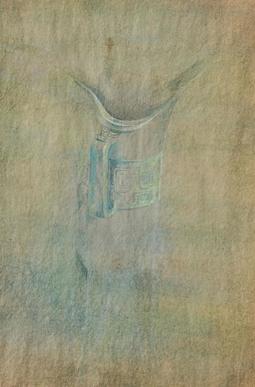 "Consciousness Achieving the Form of a Cup XV" by Morris Graves "Consciousness Achieving the Form of a Cup XV" by Morris Graves When I have shared artist Morris Graves' statement "My first interest is in being. Along the way I am an artist." with fellow artists they sometimes misunderstand its meaning. They think he is saying that he really doesn't care about art all that much. Otherwise he would have said his first interest is in art, so he must not have been a very committed artist. However, given his vast output of artwork it would be inaccurate to think that he was not committed. I believe in his statement he is placing the state of his consciousness ahead of the art-making process. Because he knew that art is a reflection of the artists state of consciousness. But most artists are so preoccupied with their process that they rarely step back to consider the state or quality of their consciousness from which their artwork arises. Graves called that state "being". And to be grounded in the state of pure being was to Graves a prerequisite for producing meaningful art. His interest in the subject of being and consciousness can be found in many of his works.  "Many of us who are driven by this life, are desperately searching for pockets of silence where we can root and grow. We must all hope we find them". --Mark Rothko Similar to Rothko, Edward Hopper once commented that he loved quite, empty places, like the interior of empty rooms. I also think Rothko’s “pocket of silence” relates to French philosopher Blaise Pascal’s saying “All of humanity's problems stem from man's inability to sit quietly in a room alone.” Perhaps if Rothko had known the pocket of silence more deeply, his life might not have ended so tragically. Some people have said that Rothko’s art is very spiritual. and I think it is. His paintings are like “pockets of silence”. There is even a Rothko Chapel where people can sit and meditate in a space filled with his paintings on the walls. It is unfortunate that Rothko could offer the pocket of silence to others but was unable to fully know it for himself.  My belief is that it is most important for an artist to develop a philosophy about life. Then he does not put paint on canvas, he puts himself on canvas. Jacob Lawrence I love Lawrence's statement because it is suggest that the deeper artist asks deeper questions and is not merely applying an aesthetic affectation to the canvas.  Georges Braque (1882-1963) Georges Braque (1882-1963) "Art is a wound that turns into light." - Georges Braque Art is a wound because it documents human suffering. It reveal humanity’s psychological pain. Art—the wound, turns into light when it enables us to see the pain. Once we see the pain, healing begins. The "light" symbolizes a new state of consciousness that transcends the old wounded state. Another way of saying it is that out of suffering comes beauty, like the pains of birth, I am told. This was true in Van Gogh's case. His life was apparently full of suffering and yet we are in awe of the beauty of his artwork. The wound is an opening, like a door, or a gash that opens into light. We have to go through the wound to reach the light beyond. We do not evolve if we do not face our wounds then move beyond them. James Joyce said the same thing as Braque but in a slightly different way: "History is the nightmare from which I am trying to awake." Contained in history is the record of human insanity and suffering. But when we finally awaken, we realize that our awakening was brought about by our suffering.  Art critic Theodore Wolff (Died 2012) Art critic Theodore Wolff (Died 2012) "A clearly defined, if subtle, line separates Graves' art from most of his contemporaries. He is one of the very few twentieth-century artists for whom the creation of art is an act of reverence and perhaps the only one of stature for whom it is largely a means of lovingly (but persistently) reaching upward, outward, and inward toward greater and simpler dimensions of being. Here he stands quite alone." Excerpt taken from essay by Theodore F. Wolff  Morris Graves I did this typographical collage inspired by John Cage's interest in mesostic prose and Zen, and combined it with David Hockney's declaration of the now and my interest is Eckhart Tolle's teachings on presence. (Coming soon. A list of talks in which Eckhart Tolle discusses presence in relation to artistic creativity) 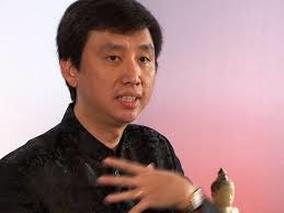 Chade-Meng Tan was hired by Google to be the company's official Jolly Good Fellow (That is his formal job description). His job is to "spread compassion, good will and world peace throughout the company". In this 15 minute video Chade-Meng Tan talks about compassion as the true source of business success. I found it relevant to the post personal project in so many ways. One is that compassion could also be a true source of artistic inspiration. Making me wonder, how would an artist express compassion through art? https://www.ted.com/talks/chade_meng_tan_everyday_compassion_at_google?language=en#t-32844 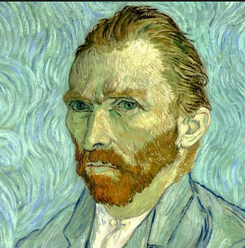 Vincent Van Gogh (1853-1890) Vincent Van Gogh (1853-1890) The true artist has a faith in what he or she is doing that is so strong it doesn’t matter if anyone has a negative opinion about it. This was true of the Impressionists. It was true of Van Gogh. If great artists of the past had stopped creating art the moment someone said an unpleasant thing about it then we would not be speaking off them today. Genius moves forward regardless of personal inadequacies. It never stops. It persists regardless of any deficiencies in skill, precision or talent. Many of the greatest artist of the world were never talented. They just never gave up. It is because of their audacity and passion regardless of their limitations that we are able to be inspired by them today. That doesn't mean a person should never accept advice or criticism, it just means that advice and criticism will not stop you. Some may say, Yes, what you say may be true of a genius, or some great artist, but certainly not me. The only difference between you and a truly great artists is that the truly great artist doesn’t think about himself; how he's measuring up. Instead, he is busy applying 100% of his attention to his creativity. Internal criticism is the worst. If you believe in your negative opinions about yourself, they will crush you. But why be crushed? Believing you are either great or inadequate if for amateurs. If you have a fire in your heart then let it burn through your life and into the world. The rest will take care of itself. —ph "True self-interest is alway in the true self-interest of others." —ph
 Mahatma Gandhi (1869-1948) Mahatma Gandhi (1869-1948) "Be the change you want to see in the world." —Mahatma Gandhi If that same inspiration could be applied to the art world then we could say "Be the change you want to see in the art world". If you have a passion to make beautiful, truthful and meaningful art in an art world that sometimes seems superficial and self-centric, then you are the one to bring the change that you want to see. -ph 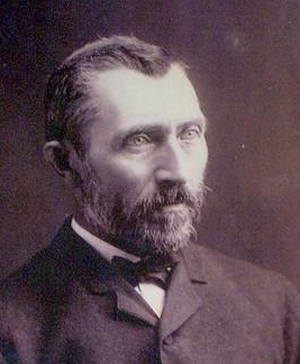 Vincent Van Gogh (1853-1890) Vincent Van Gogh (1853-1890) Great artists of the past, such as Vincent Van Gogh, gave their lives passionately to their art while believing that their effort was somehow spiritually valuable to themselves and to all of humanity. But if we artists today are merely focused on amassing wealth and celebrity then their profound effort, spiritual depth and passion will have been wasted and misunderstood. The degree of superficiality in the art world today implies that the soulful struggle of artists of the past is now irrelevant. Who cares about substance, depth, honorable purpose or a profound connection to nature and humanity when achieving immediate popularity feels so much better? Let us not squander the magnificent endowment bequeathed to us by Van Gogh and so many other ancestor artists. Some Van Gogh quotes “Your profession is not what brings home your paycheck. Your profession is what you were put on Earth to do. With such passion and such intensity that it becomes a spiritual calling.” [Today we might say "vocation" instead of "profession". Vocation indicates that an activity is a heartfelt calling, not merely a means of earning an income. -ph] “I am always doing what I cannot do yet, in order to learn how to do it.” “If you hear a voice within you saying, ‘You are not an artist,’ then by all means make art . . . and that voice will be silenced, but only by working.” “The sun itself cannot make the world bright without souls to feel its light.”  Morris Graves Self Portrait (1910-2001) Morris Graves Self Portrait (1910-2001) " . . . I have learned that art and nature are mind's Environment within which we can detect the essence of man's Being and Purpose, and from which we can draw clues to guide our journey from partial consciousness to full consciousness." "I paint to evolve a changing language of symbols and language with which to remark upon the qualities of our mysterious capacities which direct us toward ultimate reality." —Morris Graves  Painting by Morris Graves Painting by Morris Graves "A clearly defined, if subtle, line separates Graves' art from most of his contemporaries. He is one of the very few twentieth century artists for whom the creation of art is an act of reverence and perhaps the only one of stature for whom it is largely a means of lovingly (but persistently) reaching upward, outward, and inward toward greater and simpler dimensions of being and evidence of the divine. Here he stands quite alone." Excerpt taken from essay by Theodore F. Wolff The last sentence of the above states "Here he stands quite alone." A post personal artist would respond: "Not any more." 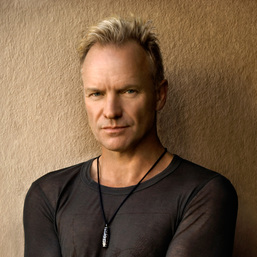 Sting Sting “For real musicians there is a spiritual component to what they do thats got nothing to with worldly success. Their music is much more of an inner journey. Any other success is just frosting on the cake. There is the idea you can go on American idol and suddenly become a star, but if you bypass that spiritual work your success will be wafer thin." —Sting speaking in the documentary “Twenty Feet from Stardom”, 2013 (at 1:11:00) |
AuthorPatrick Howe, Artist, Author, Educator, Electronic Music Composer Blog Categories
|


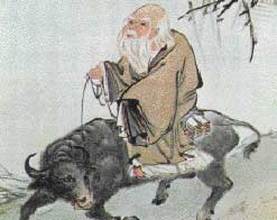





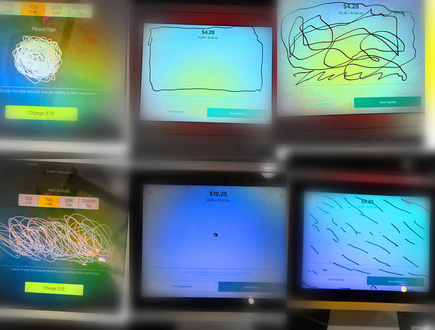


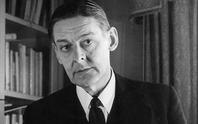
 RSS Feed
RSS Feed
